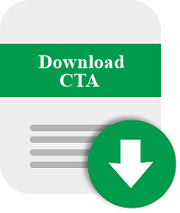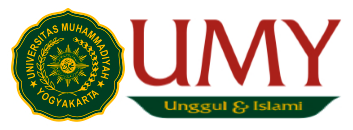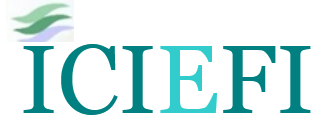PROMOTING A SHARING ECONOMY IN THE ISLAMIC FINANCE INDUSTRY: A STUDY OF SELECTED OIC COUNTRIES
Abstract
Islamic finance has been in existence for the past centuries. Nonetheless, the realization of the real objectives of the industry is still a dream yet to be true. The goal of Islamic finance is to promote a sharing economy whereby money is not concentrated in the hands of a few individuals. This purpose of this study is to investigate the application of mudarbah and musharakah concepts which facilitate a sharing economy where profit and loss is shared between the bank and customer compared to debt financing that utilizes murabahah concept. The methodology is based on secondary data obtained from central banks of five selected OIC countries. The results indicated that Indonesia, Sudan and Bangladesh recorded the highest amounts in terms of mudarabah financing while Malaysia, Indonesia and Pakistan recorded the highest amounts in terms of musharakah financing. The results also indicated that murabahah financing is high in Malaysia, Bangladesh, Indonesia and Sudan. Pakistan registered the lowest amount in terms of murabahah financing.
Keywords
Full Text:
Full Paper_DzuljastriReferences
Abdullah, D. V. (2016, April). How About This. Retrieved from The Business Year Web site: https://www.thebusinessyear.com/malaysia-2016/how-about-this/vip-interview.
Abdul-Rahman, A., &Nor, S. M. (2017). Challenges of profit-and-loss sharing financing in Malaysian Islamic banking. Geografia-Malaysian Journal of Society and Space, 12(2).
Abdul Razak, D (2011) Diminishing Partnership as an Alternative Islamic Home Financing in Malaysia: Issues and Perceptions. Unpublished PhD dissertation, University Sains Malaysia.
Ahmad, Z. A. J. P. D., Muhammad, N. M. H., Zairani, Z., Ab, M. F. A. B., Nuarrual, H. M. D., Selamah, M., Asmadi, M. N., ... International Shari'ah Research Academy for Islamic Finance (ISRA). (2013). Challenges in the application of mudarabah and musharakah concepts in the Islamic finance industry in Malaysia.
Ahmed, H. I., &Barikzai, S. A. K. (2013), Objectives of Islamic Finance achieved by Islamic Banks.Al-Adwa 45:31. Onlinehttp://journals.pu.edu.pk/pu/images/journal/szic/PDF/ English/4-%20Iftakhar%20Ahmad%20Artical.pdf
Akacem, M., & Gilliam, L. (2002). Principles of Islamic banking: Debt versus equity financing. Middle East Policy, 9(1), 124.
Al-Suwailem S. (1998). Venture Capital: A Potential Model of Musharakah. JKAU: Islamic Econ. 10, 3-20.
Al-Ghazali, M (1937), Al-Mustafa, Vol 1, Cairo al-Maktabah al – Tijariyyah al- Kubra
Amelia, E., &Hardini, E. F. (2017). Determinant of Mudarabah Financing: A Study at Indonesian Islamic Rural Banking. Etikonomi, 16(1).
BNM (2010). Guidelines on Musharakah and Mudarabah Contract for Islamic Banking Institutions.Online http://www.bnm. gov. my/index. php.
Cerović, L., SuljićNikolaj, S., &Maradin, D. (2017). Comparative Analysis of Conventional and Islamic Banking: Importance of Market Regulation. Ekonomskamisaoipraksa, (1), 241-263.
Chapra, M.U (1985), Towards a just monetary system, UK: The Islamic Foundation
COMCEC. (2017). Diversification of Islamic Financial Instruments.Yücetepe: COMCEC. Retrieved from http://www.kalkinma.gov.tr/Lists/Yaynlar/Attachments/777/Diversification%20 of%20Islamic%20Financial%20Instruments.pdf
Dixon, R. (1992). Islamic banking.International Journal of Bank Marketing, 10(6), 32-37.
Dusuki, A. W., Ali, M. M., &Sandrego, Y. D. (2013). The Application of Commodity Murabahah in Bursa Suq Al-Sila' Malaysia Vis-A-Vis Jakarta Future Exchange ShariahIndonesia: A Comparative Analysis. ISRA International Journal of Islamic Finance, 5(1), 191.
Fasih, F. (2012). Inclusive growth in India through Islamic banking.Procedia-Social and
Behavioral Sciences, 37, 97-110.
Gait, A. H., & Worthington, A. (2009). A Primer on Islamic Finance: Definitions, Sources, Principles and Methods. Australia: Department of Accounting. Finance and Economics, Griffith University.
Islamic Bankers. (2015, January 28). Equity-based Financing vs Debt-based Financing. Retrieved from Islamic Bankers web site: https://islamicbankers.me/2015/01/28/equity-based-financing-vs-debt-based-financing/
Kahf, M and Khan, T. (1992). Principles of Islamic Financing.Research Paper No. 16, Islamic Research and Training Institute, Islamic Development Bank, Jeddah.Available at http://www.irtipms.org/PubAllE.asp.
Kayed, R. N. (2012). The entrepreneurial role of profit-and-loss sharing modes of finance: theory and practice. International Journal of Islamic and Middle Eastern Finance and Management, 5(3), 203-228.
M. Mansoor Khan, M. Ishaq Bhatti, (2008) "Islamic banking and finance: on its way to globalization", Managerial Finance, Vol. 34 Issue: 10, pp.708-725, https://doi.org/10.1108/03074350810891029
Muhamad, A.& M.A. Omar, (2012) "Islamic banking and economic growth: the Indonesian experience", International Journal of Islamic and Middle Eastern Finance and Management, Vol. 5 Issue: 1, pp.35-47, https://doi.org/10.1108/17538391211216811
Md. Abdul Anwar Sarker, (2013), ISLAMIC BANKING IN BANGLADESH: PERFORMANCE, PROBLEMS & PROSPECTS, International Journal of Islamic Financial Services Vol. 1 No.3. http://easymoneyhere.0fees.net/3.pdf
M., Ashraf, 2013, Development and growth of Islamic banking in Pakistan, African Journal of Business Management, Vol. 7(32), pp. 3144-3151, 28 August 2013 DOI: 10.5897/AJBM11.1748 ISSN 1993-8233 © 2013 Academic Journals http://www.academicjournals.org/AJBM
Mirakhor, A., &Bao, W. Y. (2013). Epistemological foundation of finance: Islamic and conventional. Economic Development and Islamic Finance, 25.
Noraziah, C. A. and A. Ghafar, (2010). Sharia’h Parameteres for Musharakah Contracts: A Comment. International Journal of Business and Social Science, Vol. 1 No. 1; October 2010. http://www.ijbssnet.com/journals/13.pdf
Rosly, S. A. (2010). Shariah parameters reconsidered. International Journal of Islamic and Middle Eastern Finance and Management, 3(2), 132-146.
Simkovic, M. (2013). Competition and crisis in mortgage securitization.Ind. LJ, 88, 213.
Usmani, T. (1998). An introduction to Islamic finance.ArhamShamsi.
https://www.indonesia-investments.com/business/industries-sectors/islamic-banking/item6131?
DOI: https://doi.org/10.18196/ijief.114
Refbacks
- There are currently no refbacks.
Copyright (c) 2018 IJIEF: International Journal of Islamic Economics and Finance

This work is licensed under a Creative Commons Attribution-ShareAlike 4.0 International License.
International Journal of Islamic Economics and Finance (IJIEF)
International Program for Islamic Economics and Finance
Department of Economics
Faculty of Economics and Business
Universitas Muhammadiyah Yogyakarta
Pascasarjana Building, Ground Floor
Jl. Brawijaya (Ringroad Selatan), Kasihan, Bantul
D.I. Yogyakarta 55183, INDONESIA
Official email: ijief@umy.ac.id












1.jpg)